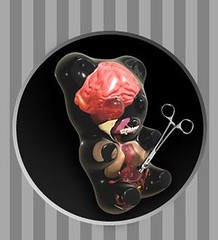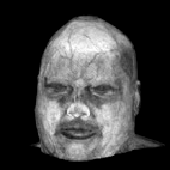“En udstilling opleves ofte som meget færdig. Alt er bestemt og sat i scene. Publikum føler alt for sjældent, at det gør en forskel, om de kom den ene dag eller den næste, at det betød noget, om de var der eller ej”,
skrev Camilla igår. Enig, det er en udfordring for museerne idag. Og det rejser spørgsmålet om muligheden for et museum 2.0.
Ikke i betydningen at bruge web 2.0-teknologier (sociale netværkstjenester m.m) som supplement til det traditionelle museum — det gør museerne jo allerede i stor udstrækning (fx benytter vi os af både Facebook og blogs).
Men i betydningen at museerne lærer af udviklingen inden for webmediet, som meget tydeligt er gået fra en situation, hvor brugerne var mere eller mindre passive konsumenter af webprodukter til at blive aktive medskabere af produkter. Dvs. at museerne begynder at organisere sig analogt til ‘the participatory web’.
Det er den betydning af museum 2.0 som Nina Simon bliver ved med at hamre ind i den kollektive museum&web-bevidsthed med sin blog Museum 2.0.
En af grundideerne i web 2.0 er, som Nina har påpeget, ‘perpetual beta’, dvs. at en webapplikation ikke opfattes som færdig, men at den hele tiden en under konstant afprøvning med udgangspunkt i brugernes respons og tilbagemeldinger. Dvs. hvor man tidligere udviklede appikationen inden for software-virksomheden og først lagde den ud på nettet når den var ‘færdig’, så har man i de sidste ti år i højere grad inddraget brugerne allerede under udviklingsarbejdet.
Hvordan ville ‘perpetual beta’-udstillinger se ud? Ja, fx handler det vel om at gøre op med den traditionelle kuratorrolle, dvs. at kuratorerne sidder på lukkede museumskontor og udvikler udstillingen uden at brugerne har indsyn i planlægningsprocessen — og så BANG får de lov at se resultatet — og bagefter sker der, som Camilla påpeger, ikke en dyt — andet end at man skifter en pære ud i ny og næ.
At tænke udstillilnger i ‘perpetual beta’ ville indbære at de besøgende inddrages på et meget tidligere stadium — så at udstillingen er under kontinuerlig udvikling og aldrig egentlig bliver ‘færdig’. At museet ikke har nogen ‘grand opening’-event med champagne og snitter til udvalgte inviterede gæster, men en kontinuerlig åbning, hvor publikum er med fra starten og derigennem påvirke valget af genstande, foreslår lyssætning, prøvelæser tekster (der så evt. bliver skiftet ud), etc. undervejs. Udstillingen bliver en kontinuerlig udviklingsprocess snarare end et produkt som vises frem på åbningsdagen, og derefter kun justeres i detaljerne.
Jeg tror ikke alle udstillinger behøver være ‘perpetual beta’. Det er ikke et formål i sig selv at publikum skal sætte et aftryk. Men museumsverden ville må godt af at eksperimentere mere med udstillingsformerne, og ‘perpetual beta’-konceptet er et godt bud på en udstillingsfilosofi som ville imødegå nogle af de problemer Camilla rejste i sin post i går.
Det ville også være meget sjovere for kuratorerne at arbejde på den måde.
 From all of us to all of you — we’re taking a few days off to enjoy a research-, exhibition-, acquisition- and blog-free zone.
From all of us to all of you — we’re taking a few days off to enjoy a research-, exhibition-, acquisition- and blog-free zone.








 Just a comment triggered by the announcement for the 3rd annual graduate student conference at the Department of Comparative Literature, Stanford University, 10-11 April 2009 on the theme avatars, personae, heteronyms and pseudonyms.
Just a comment triggered by the announcement for the 3rd annual graduate student conference at the Department of Comparative Literature, Stanford University, 10-11 April 2009 on the theme avatars, personae, heteronyms and pseudonyms.